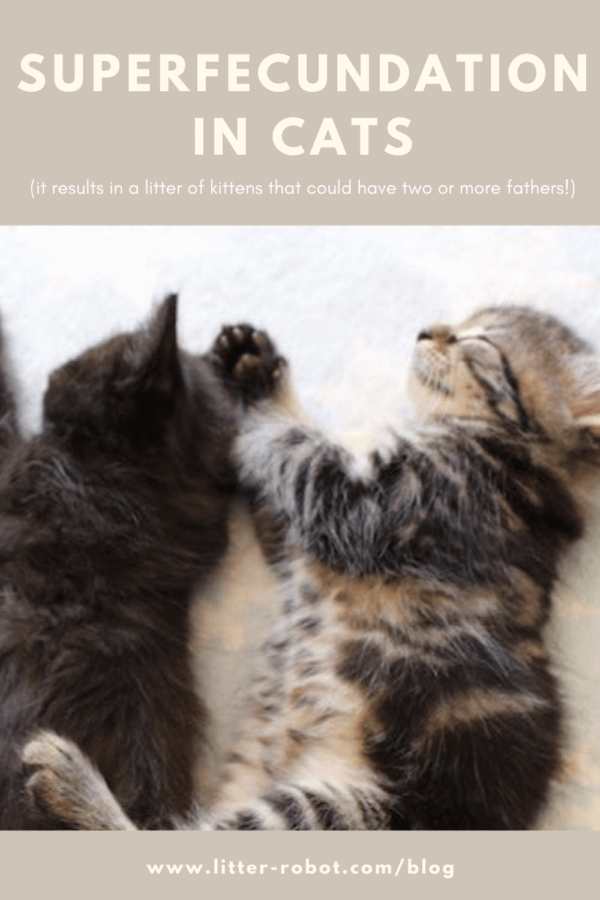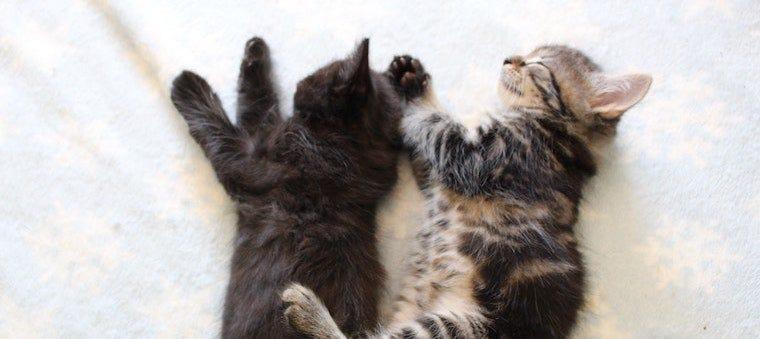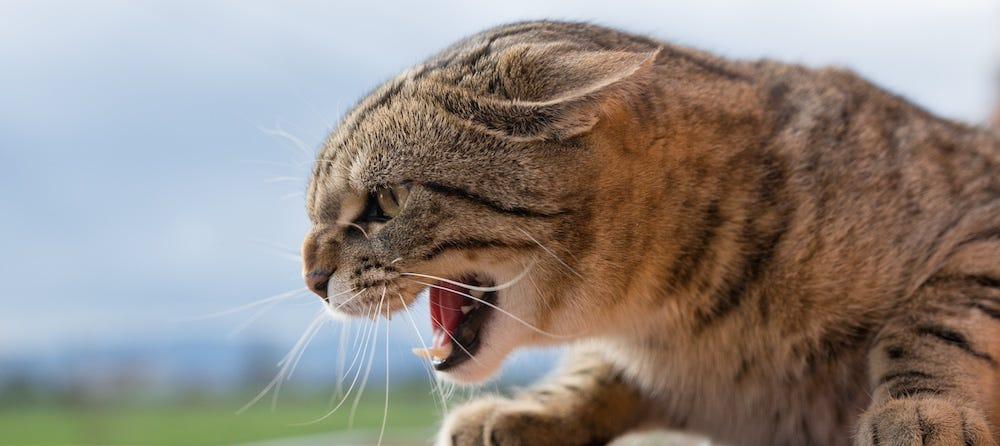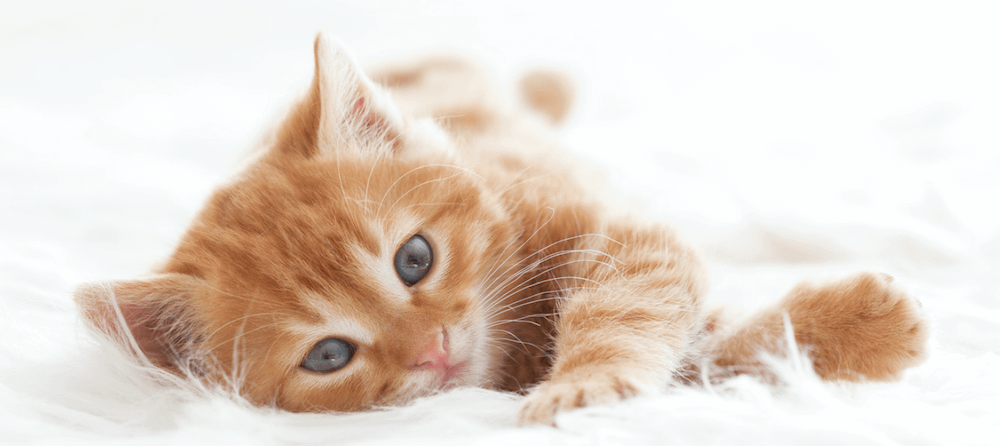Have you ever heard about cat litters with multiple fathers? Or wondered, can cats have twins? Today we’re delving into superfecundation, a relatively common phenomenon among cats related to “atypical twinning.” So, what is superfecundation (other than a super long word)? Let’s find out!
What is superfecundation?
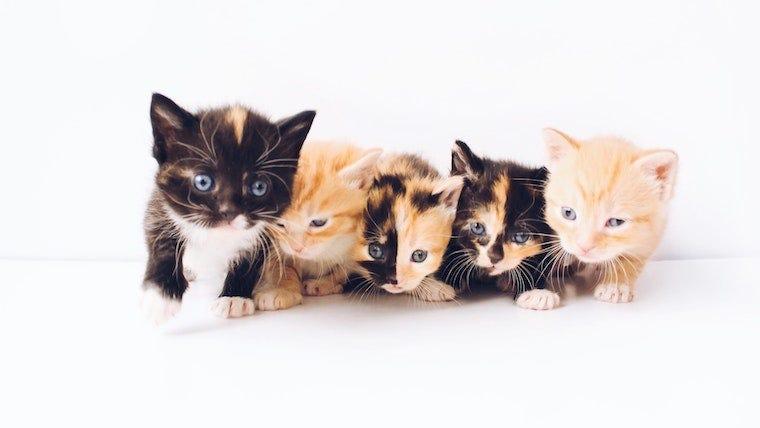
Hidden inside superfecundation you may have noticed the word fecund, which means fertile. There are two types of superfecundation: homopaternal and heteropaternal.
Homopaternal superfecundation
Homopaternal superfecundation is the fertilization of two separate ova from the same father, leading to fraternal twins—a somewhat common occurrence in humans.
Heteropaternal superfecundation
Then there’s heteropaternal superfecundation. Essentially, this type of superfecundation occurs when a female mates with two or more males, resulting in the fertilization of two or more ova from the same cycle from separate acts of conception. This is more common in cats and dogs. It is rare in humans.
To put it simply: Superfecundation in cats results in a litter of kittens that could have two or more fathers!
How does superfecundation in cats occur?
Unspayed female cats (called queens) can go into heat every 14 to 21 days, and their fertile period typically lasts between 1 and 10 days. As you can imagine, feral queens might, ahem, interact with quite a few tom cats during that time. Thus, her eggs might be fertilized by more than one male.
Can you identify cat litters with multiple fathers?

If you’ve ever come across a litter of kittens whose characteristics ran the gamut, you’re probably looking at a cat litter with multiple fathers. You might see multiple coat colors, patterns, and lengths among one single litter.
Unless you oversee breeding in a controlled environment or perform extensive DNA testing, you’ll probably never know for sure how many fathers sired one litter of kittens.
Moral of the story: Get your cats spayed and neutered. And if possible, practice TNR (trap-neuter-return) with feral neighborhood cats.
Can cats have twins?
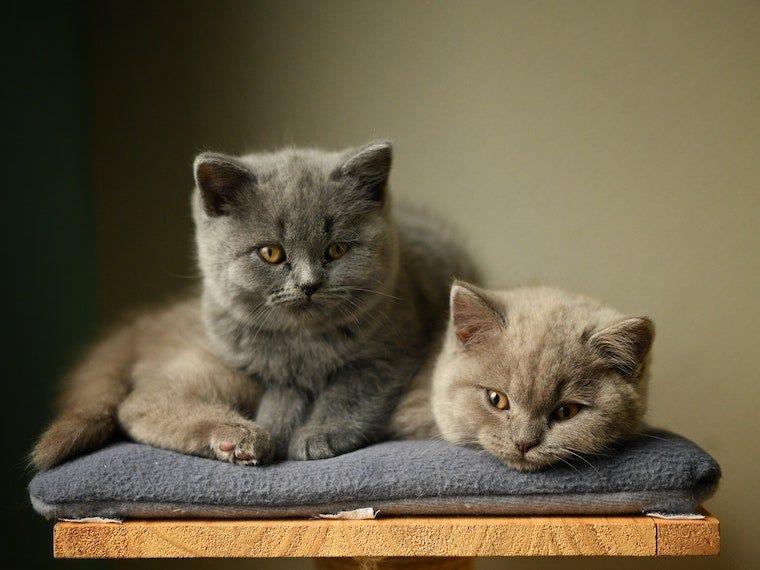
Identical cat twins are a thing. However, it can be difficult to recognize cat twins without significant genetic testing because the color pattern genes can be expressed differently in two cats even when the genetic information is identical.
Say you have two kitten littermates that you know have the same mother and father. Like humans, each of these kittens will receive 50% of their DNA from their mom and 50% from their dad. But those two siblings can inherit two different copies of each gene from each parent. Therefore, even if these kittens are “identical” (not even fraternal!), they may look totally different.
Now you know what superfecundation is, and why it is relatively common in cats. Want more interesting facts about cat genetics? Learn why 99.9% of calico and tortoiseshell cats are female, or why heterochromia is more common in cats than other species.
Sources:
- Estrous Cycles in Cats
- High variation in multiple paternity of domestic cats (Felis catus L.) in relation to environmental condition
- Clinical management of pregnancy in cats
